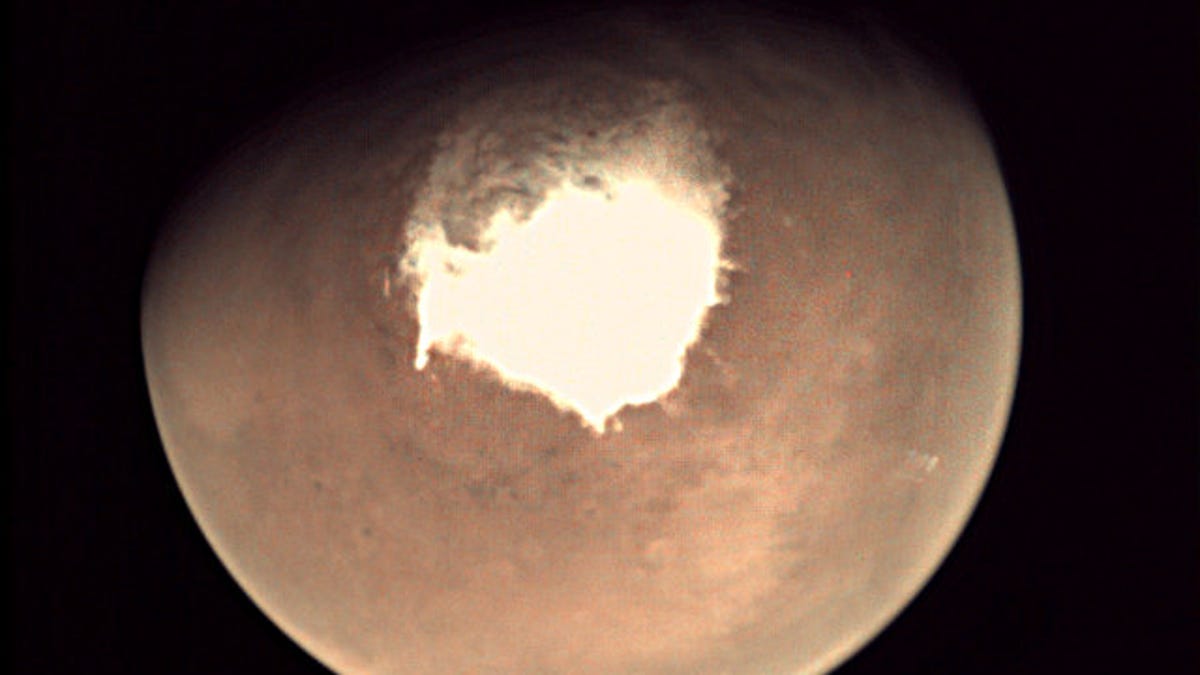Scientists think Mars lake may be created by recent volcanic activity
The dead, Red Planet may be more alive than we previously believed -- giving life a chance at surviving.

Mars shows off its south pole.
The Red Planet is sometimes considered a dead planet, but new research suggests that it may hide a roiling, volcanic beat within its crust.
In July 2018, an international team of scientists discovered that Mars was likely harboring liquid water underneath its southern ice cap. Using data obtained by the European Space Agency's Mars Express orbiter, they suggested there was a salt water lake lurking below the cap, about 12.5 miles (around 20 kilometres wide). Because of similar phenomena seen under the Earth's ice caps, lead researcher Roberto Orosei said at the time "we had to conclude that there is water on Mars today."
Orosei's team suggested that salts, which lower the melting point of ice, may be present at such a concentration that they enabled the lake to form.
This new study builds on that research but posits the liquid water underneath the ice cap hasn't completely frozen over not because of salts, but because of volcanic activity in Mars' subsurface.
Using a number of physical models, the team tried to understand the level of heat that would need to be generated in order to form the proposed underground lake. Their paper, published in Geophysical Research Letters on Tuesday, showed that one plausible solution would be if a magma chamber was present at a depth of no greater than 10 kilometres below.
Their model rules out that salt, alone, could sufficiently produce the conditions needed for liquid water to form. Thus, the paper concludes that "recent magmatism may offer a plausible explanation" but without such activity, suggest that there may be no liquid water at the ice cap at all.
The team suggest that NASA's InSight lander, which is positioned on Mars' surface and equipped with a heat probe, will provide a clearer picture of how hot the Martian crust might get. Mars interior isn't quite as hot as Earth's but we're not sure exactly how warm it is.
Of course, if there is liquid water then does that mean there may also be life? An underground lake provides a potential Garden of Eden, a safe paradise where life may still, uh, find a way.
"We think that if there is any life, it likely has to be protected in the subsurface from the radiation," said Ali Bramson, an author on the new paper.
On Feb. 13, NASA bid farewell to its resilient Martian rover, Opportunity, which had been studying the planet from the ground for 15 years. In that time, Opportunity discovered evidence that Mars was once wet, rather than dusty and dry.
And though, sadly, Opportunity is dead, Mars may very well be more alive than we thought.

